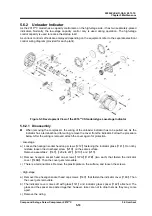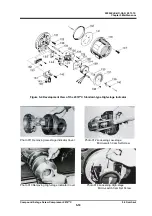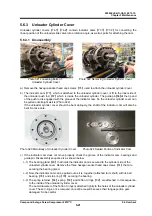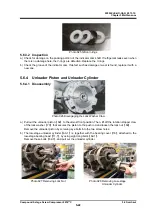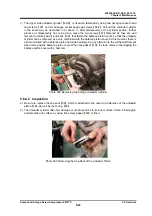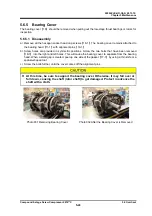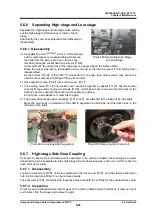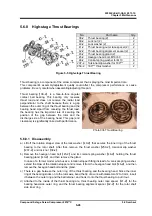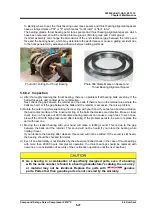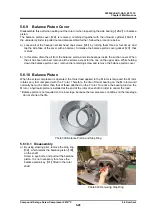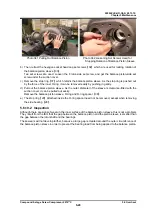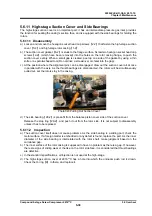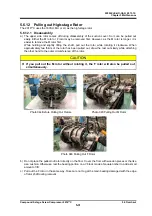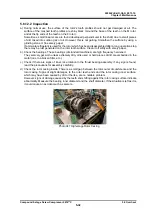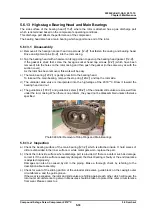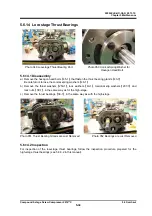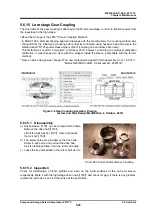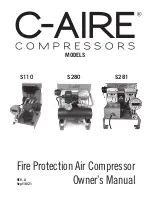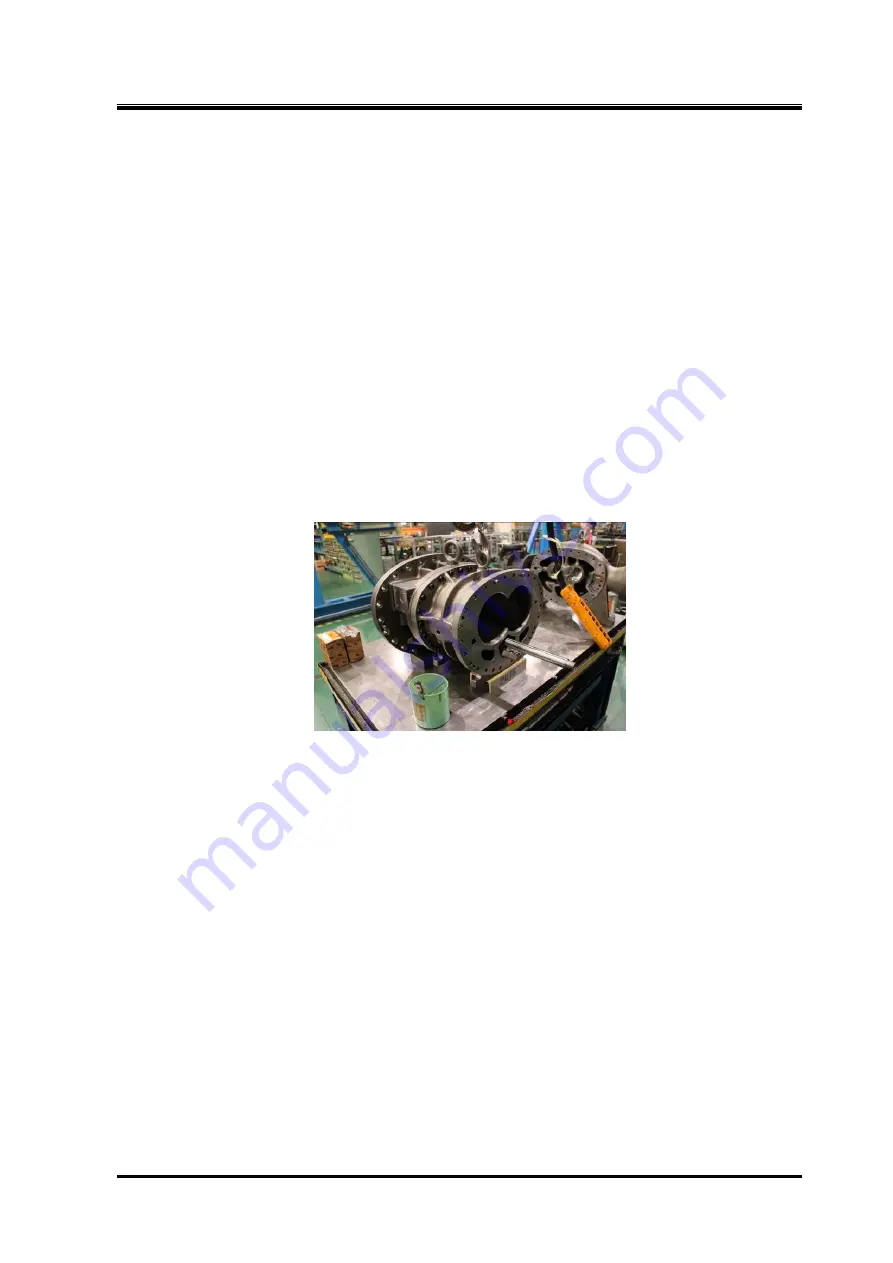
2200LZJE-HO-C6-N_2013.12.
Chapter 5 Maintenance
Compound 2-stage Screw Compressor 2016**C
5.6 Overhaul
5-32
5.6.12.2 Inspection
a) During normal use, the surface of the rotor's tooth profiles should not get damaged at all. The
surface of the meshed tooth profiles are shiny black (around the base of the teeth on the M rotor,
and at the tip ends of the teeth on the F rotor).
Sometimes, small linear scars are found developed perpendicular to the shaft, due to small pieces
of dirt mixed into suction gas or oil. However, this is not galling. Smoothen the surface by using a
grinding stone or fine emery paper.
If ammonia refrigerant is used for the rotor which has been disassembled after a long operation stop,
there may be rust generated on the rotor tooth surface. Clean it off softly with emery paper.
b) Check the bearings. These bearings (of standard machines) are high frequency hardened.
They scarcely get worn unless extremely dirty oil is used or hard pieces of dirt are embedded in the
metal (due to a broken filter, etc.).
c) Check if there are signs of inner race rotation in the thrust bearing assembly. If any sign is found,
read the precautions for assembly carefully.
d) Check the rotor casing inside. There is a small gap between the rotor outer circumference and the
rotor casing. Signs of slight damages to the rotor teeth ends and the rotor casing inner surface,
which may have been caused by dirt or the like, are no notable problem.
However, signs of damage caused by the teeth ends hitting against the rotor casing surface indicate
abnormality. Measure the bearing inner diameter and the shaft diameter. If the situation is left as it is,
it could cause an accident such as seizure.
Photo 047 High-stage Rotor Casing

